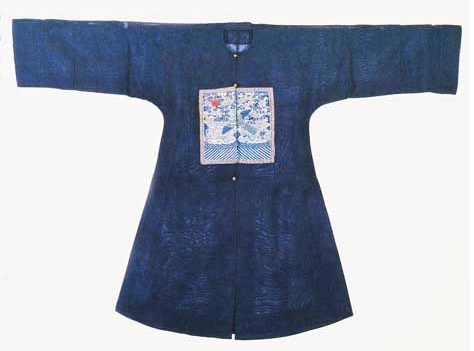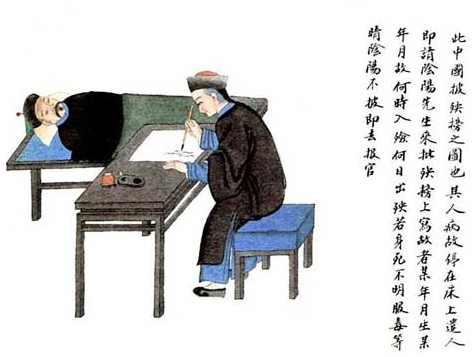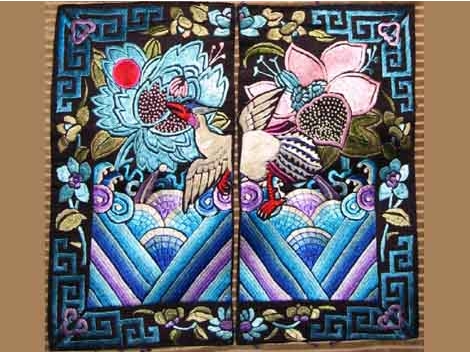
Togae is the garment worn by officials on official occasions in ancient China. They have strict specifications and can be distinguished from designs, colors and patterns.
Togae was a crucial part of ritual system in ancient China. Grande toilette appeared in the Shang-Zhou Period in China, and adornments and special patterns on emperor's grande toilette were prescribed in patriarchal clan and ritual system in the Western Zhou Dynasty. It was also prescribed in this system that officials of different ranks shall wear costumes of different types at various rites. Since the Ming Dynasty, dragon patterns were exclusively used in emperor's costume.

Pattern signs of an animal named "Buzi" were designed in costumes for officials of various ranks in the Ming Dynasty. Such signs were broidered on pieces of square satin which were used to decorate the front and rear part of official's attires. Patterns of red-crowned crane, golden pheasant, peacock and birds were applied to civil official's attires, while those of savage beasts including kylin, lion and leopard were adopted in military official's attires. In the Qing Dynasty, officials began to wear a kind of cap which was decorated with a cap button on the top and hung with a tail feather. Being made of gem, coral, gold, silver and other materials, cap button and tail feather served as an important sign of different ranks and titles of officials. In the late Qing Dynasty, more stringent rank classification was reflected in togaes. It was prescribed that all togaes shall be elaborately made by organs authorized by the imperial family, allowing no alterations in designs. Moreover, togaes shall be worn in strict conformity with ranks of officials, and unauthorized alteration of togaes was regarded as a felony.

Togaes are scarcely seen in modern times except in costume pieces and dramas where their gaudiness is fully presented. Presently, they are more commonly regarded as fine works of ancient raiment and important cultural relics which help to research the history of raiment.





